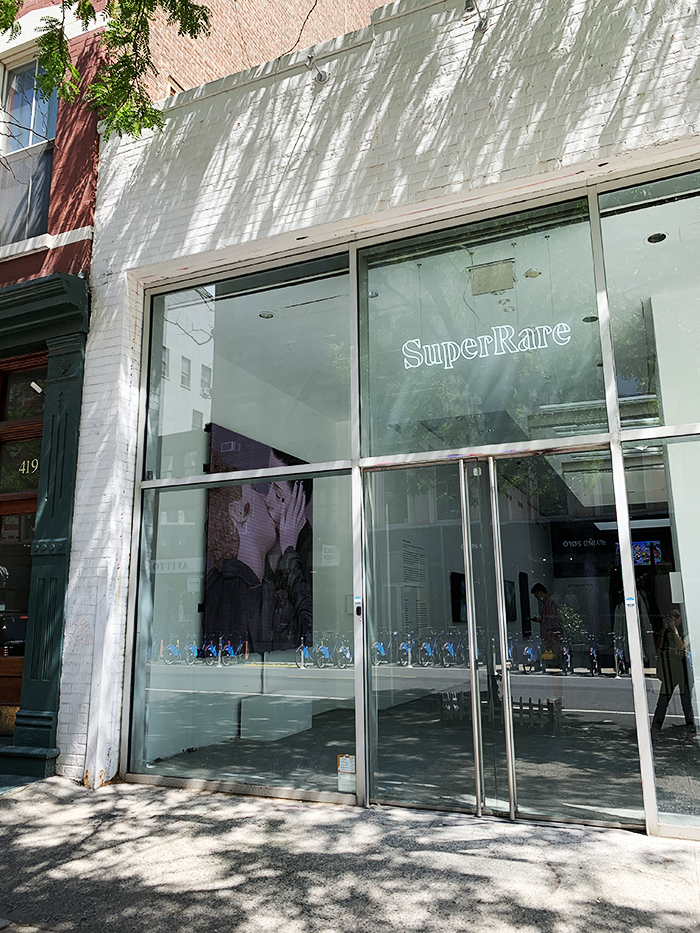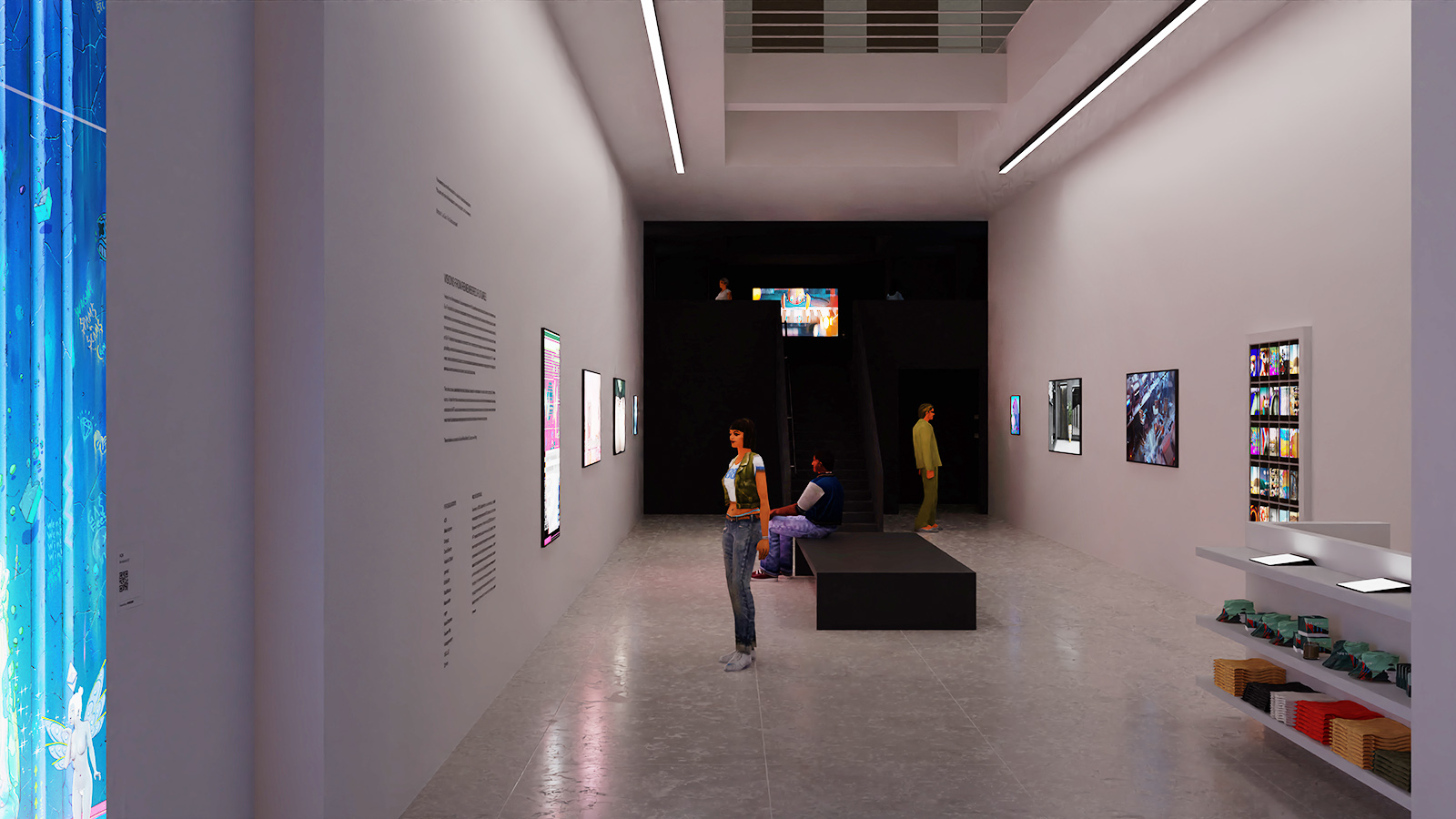What does it mean to experience NFT art in person? In the past year, venues from Sotheby’s to UCCA Lab to Seattle NFT Museum have ventured responses with onsite, IRL exhibitions of blockchain art that essentially spatialize an intangible medium. And since last month, SuperRare has entered the conversation with the opening of its first physical pop-up gallery in New York.
From plan to build, it’s a project that was some five months in the making, with about 20 people roped in from SuperRare’s existing teams to work on the pop-up, “so everyone is helping as much as they can,” says An Rong, SuperRare’s Senior Curator. Construction took a mere two weeks, before the gallery launched last month as a digital art showcase.

ICONS x SuperTrans opened June 9 at the gallery with a focus on works by LGBTQIA+ creators. Image: Min Chen
Already, SuperRare Gallery is on its second exhibition, ICONS x SuperTrans, which opened yesterday with a focus on works by LGBTQIA+ creators including FEWOCiOUS, Cymoonv, and Brian Vu. The space itself takes cues from all white cubes before it, dotting its spare white (and black) walls with Samsung and Lago screens displaying NFT artworks in ultra-high resolution. Wall labels accompany each screen, bearing QR codes that once scanned, call up details of the NFTs on the SuperRare online platform.
According to Rong, the gallery design intentionally leaned toward “a more traditional art gallery approach” to better make for an immersive environment. “Most NFT galleries are more like an event space, or the screen setup makes you feel like you’re in Times Square,” she tells Jing Culture & Commerce. “We want to go the opposite way — making it more minimalistic and art-centric so people can have a longer attention span in our gallery.”

The space is set up with screens by Samsung and Lago, displaying the NFT works in ultra-high resolution. Image: Min Chen
While one might wish for a more innovative presentation of a Web3 medium that’s been hailed as radical and transformative, the convention-bound setup makes sense in its appeal to general audiences and even (literally) casual passersby. In effect, the SuperRare Gallery extends the reach of NFTs off-chain, helping to mainstream a medium that the project’s press material describes as “fast growing and often misunderstood.”
But for Rong, the gallery is less overtly concerned with addressing the celebrity-aided misconceptions that have riddled media coverage of NFTs, and more so with surfacing the dynamism of the digital art space. The past year’s NFT boom, she notes, has added “more diversity to the talent pool, more diverse tastes in collecting.” The decentralized nature of blockchain art, too, has spawned sub-groups where buyers can discover new or emerging creators without traditional gatekeeping. “There’s no unified opinion on who are the biggest NFT artists,” she adds, “and that’s a good thing.”
Hence the gallery’s array of both established and emerging artists, as well as its line-up of exhibitions and events aimed at convening Web3 makers, collectors, and pundits. Yes, NFTs are on display, but as evident is the flourishing community and enthusiasm surrounding the medium and its expanding footprint. Which, more than any screen setup, should perhaps underscore any IRL experience of NFTs. “There will always be more people coming to understand NFTs everyday and then introducing NFTs to their friends,” says Rong. “People who understand, understand.”



